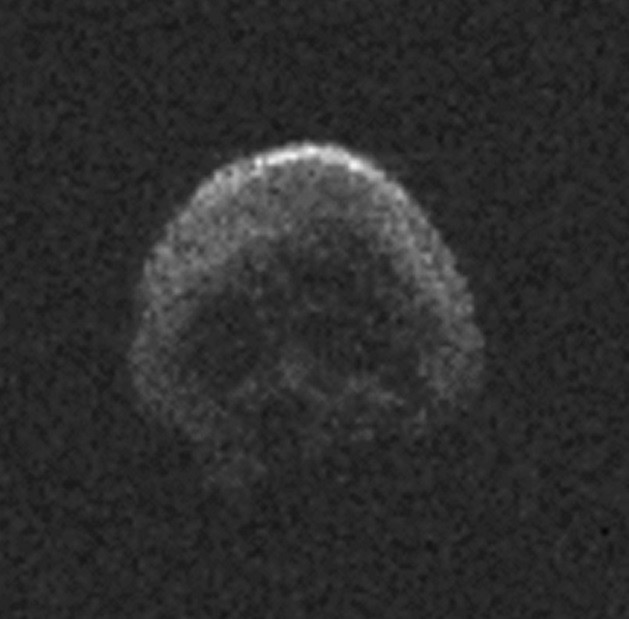This Halloween, a massive dead comet the appeared to be a human skull safely zipped by Earth on 1 P.M. EDT.
Scientists first thought that that this was an asteroid, which missed the planet by some 302,000 miles which is measured at 1.3 times times the distance from the Earth to the moon. The asteroid is known as 2015 TB145 and is now considered a dead comet where it once emitted volatiles and debris towards the sun.
Ever since it has been detected, NASA has been monitoring the asteroid via the Infrared Telescope Facility located on Mauna Kea, Hawaii. Apart from this, data analysis from the Arecibo Observatory in Puerto Rico is now suggesting that this object is spherical in shape and measures more than 2,000 feet in diameter and rotates every five hours at a speed of 21 miles per hour.
According to Kelly Fast of the Infrared Telescope Facility, data from the IRTF indicate that the object seems to be a dead comet however, images from the Arecibo are now revealing that this object is wearing a skull costume for its Halloween flyby.
According to Vishnu Reddy from the Planetary Science Institute in Arizona, the space object also seems to be made from fresh asphalt where it has a reflective surface that bounces off six percent of sunlight, making it brighter than the usual comet.
Scientists conclude that this object could be originally from a comet however, since there is no evident coma, scientists now believe that it is a dead comet.
This dead comet where it is also known as "The Great Pumpkin" fortunately zipped by the planet without any dangerous repercussions.
Scientists also consider this as a great opportunity for tracking space objects to develop counter measures and strategies against near Earth objects such as asteroids that can collide and strike the planet.
NASA also predicts that asteroid 2015 TB145 will return near the Earth's region in the solar system around September 2018 where it will make a flyby at a distance of 24 million miles from the planet.



























